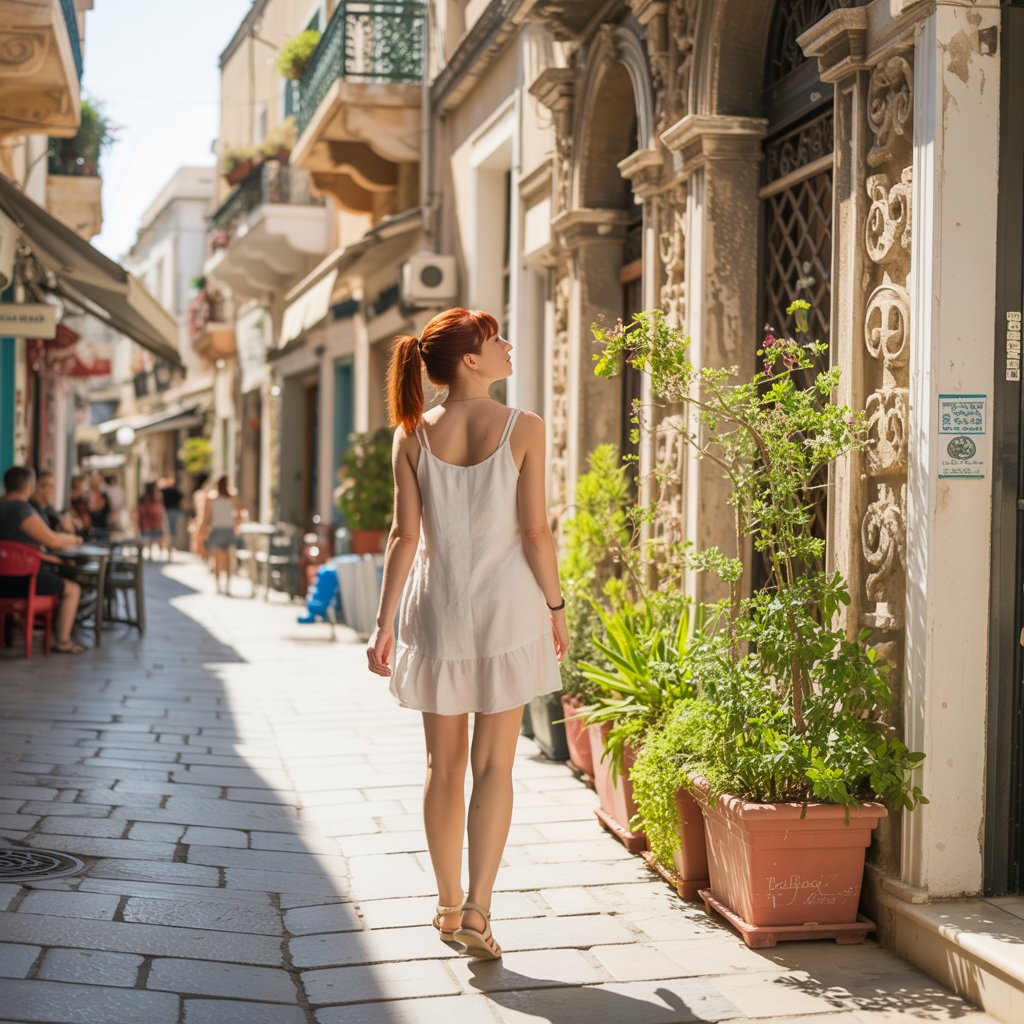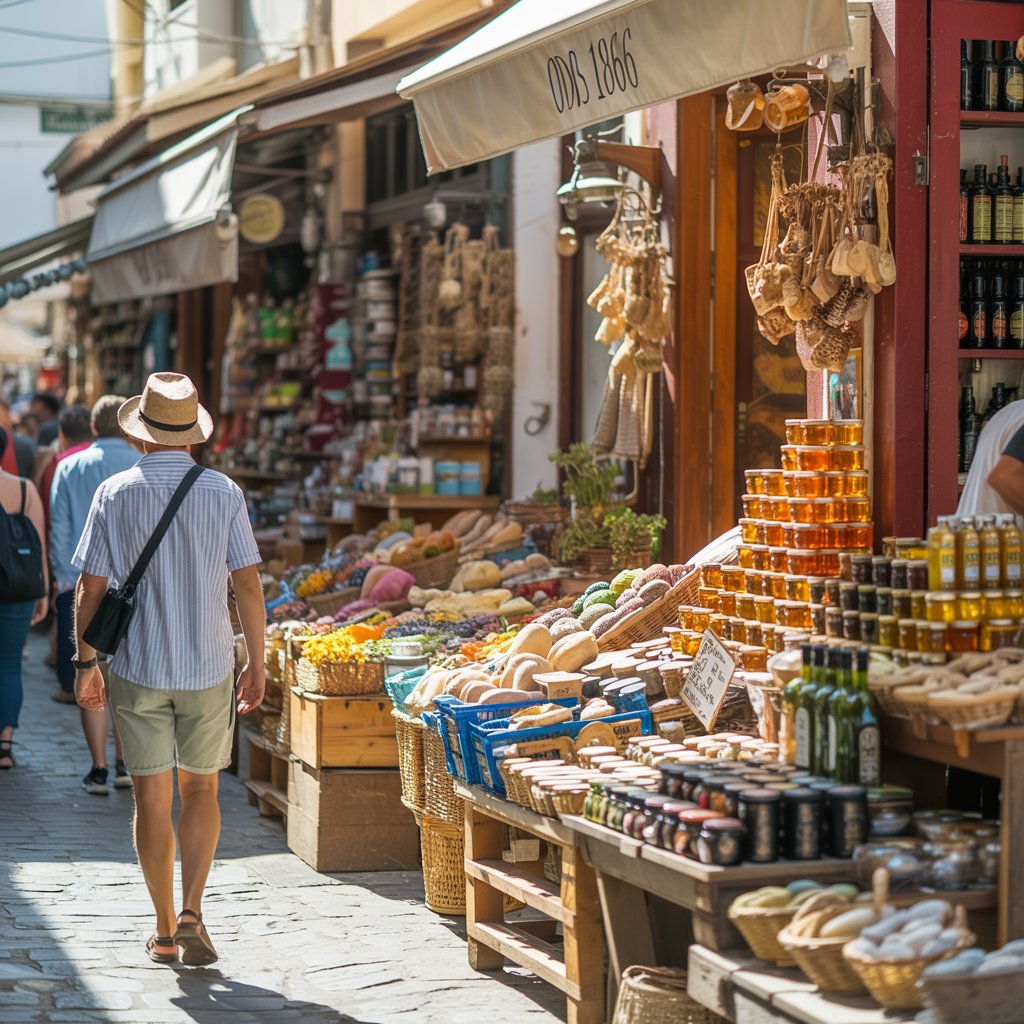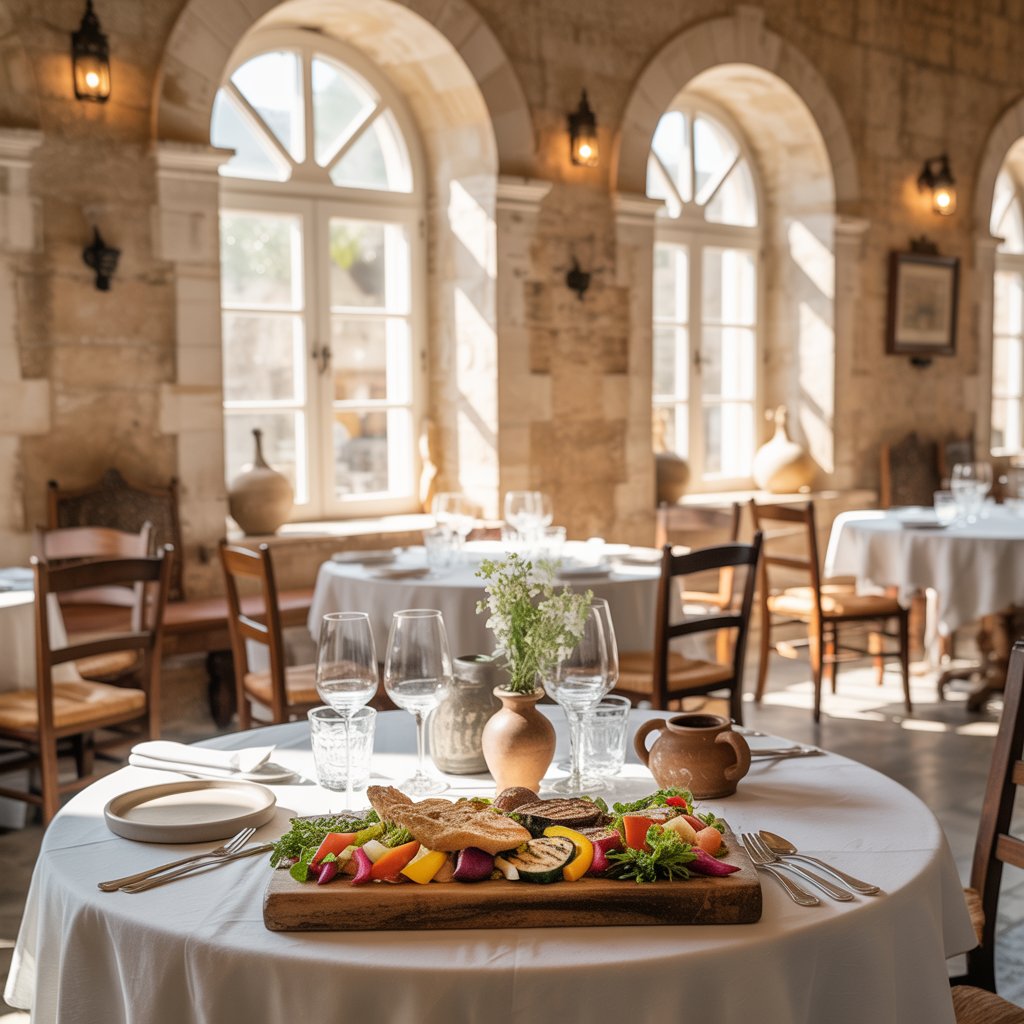Heraklion Cruise Port Overview
Forget the predictable Mediterranean ports where you shuffle through tourist traps and return to your ship vaguely dissatisfied. Heraklion slaps you awake with the raw reality of Crete—Europe’s oldest civilisation mixed with Venetian muscle and modern Greek chaos. The cruise terminal drops you a 15-minute walk from where the Minoans built their empire, and if you can’t make something memorable of that, you’re not trying hard enough.
The port itself handles over 500,000 cruise passengers annually, making it Greece’s busiest after Piraeus. That tells you two things: it’s set up for cruisers, and you’ll need to move strategically to dodge the crowds.
Quick Facts
- Distance to Old Town: 1.5km (15-minute walk from passenger terminal)
- Free Shuttle: Yes, from ship to passenger terminal (5 minutes)
- Walk to City: Yes, easy waterfront promenade
- Taxi to Town: €5-7 (5 minutes)
- Knossos Palace: 5km away, 20 mins by taxi (€15-20) or Bus #2 (€1.50-2)
- Archaeological Museum: 1.5km from terminal, essential visit
- Nearest Beaches: Amoudara (6km west), Karteros (9km east)
- Terminal Facilities: Tourist info, ATMs, free Wi-Fi, toilets, taxi rank
- Best For: Independent cruisers, history enthusiasts, cultural explorers
If you’re planning to visit a different Greek island, our Greek Islands Ports Guide will help with that.
Where Cruise Ships Dock in Heraklion
Your ship ties up at one of several piers (II, III, or IV-V) in Heraklion’s working harbour. Don’t expect to stroll straight into town—walking within the port area isn’t permitted. Instead, the port authority runs free shuttle buses that whisk you from your berth to the main passenger terminal in five minutes. This isn’t a courtesy; it’s necessity. The port sprawls across industrial zones you’d have no interest in walking through anyway.
The passenger terminal opened in 2017, covers 2,500 square metres, and functions exactly as a cruise terminal should: passport control, security screening, tourist information desk, and a handful of basic facilities. You’ll find toilets (always wise to use them here), ATMs that dispense euros at reasonable rates, free Wi-Fi that actually works most of the time, and a small tourist office stocked with city maps. The maps are genuinely useful—grab one.
Terminal to Old Town: From the passenger terminal exit, it’s a straightforward 1.5-kilometre waterfront walk to Heraklion’s Venetian Harbour and Old Town. Fifteen minutes at a sensible pace. The route follows the seafront promenade, completely safe, with Koules Fortress appearing ahead as your landmark. If you can’t manage that walk, taxis wait at the terminal rank with fixed prices displayed—expect €5-7 to the city centre.

Getting from Heraklion Cruise Port to City Centre
- Walking: The best option for able-bodied travellers. Exit the terminal, turn right along the waterfront, and follow the promenade. You’ll pass fishing boats, yachts, and locals who actually use this harbour for work. The Old Town opens up beyond Koules Fortress.
- Taxis: Licensed taxis queue outside the terminal with official rate cards posted. Drivers here operate on set prices to major destinations:
- City centre/Old Town: €5-7
- Knossos Palace: €15-20 (includes waiting time if negotiated)
- Heraklion Airport: €20-25
- Amoudara Beach: €10-15
Bargaining isn’t expected with metered taxis, but if drivers offer fixed excursion rates, confirm everything upfront. Some offer combo deals—Knossos plus city tour for €70 for up to four passengers. Decent value if you split it.
- Buses: Local blue buses connect the port to various destinations. Bus Station A sits 10 minutes’ walk from the terminal. For Knossos Palace, catch Bus #2 from this station—it departs every 15-20 minutes, takes 20-30 minutes, and costs €1.50-2. Buy tickets from the kiosk near the station or from the driver. The #2 also stops near the Archaeological Museum if you’re visiting both.
- For beaches: Bus #100 runs to Amoudara Beach west of the city. For Karteros Beach (east, near the airport), take Bus #7. Both cost around €2 and run regularly during cruise season.
- Hop-On Hop-Off: A bright yellow tourist bus parks right outside the terminal. €15 buys all-day access with 15-language audio guides. It stops at Knossos Palace, making it convenient if you’re time-pressed. The route takes about 90 minutes complete. Not essential—regular buses work fine—but it removes thinking.
- Car Hire: Several agencies operate near the port. Pointless for a port day unless you’re planning a proper drive into Crete’s interior. Heraklion’s traffic runs aggressive, parking’s tight, and you’ll waste half your day collecting and returning the vehicle.
Top Things to Do in Heraklion from a Cruise Ship
Koules Fortress (15 Minutes from Terminal)
The Venetian fortress guarding the harbour entrance. Built in the 16th century, still impressively intact. Walk along its sea walls for harbour views and glimpses of your ship from the outside. Entry costs a few euros. Worth 30-45 minutes if you appreciate military architecture. Skip it if fortresses bore you—there’s no shame in admitting they’re not your thing.
Archaeological Museum (20 Minutes from Terminal)
This is non-negotiable. One of Europe’s finest museums houses the world’s most important Minoan collection. The Phaistos Disc, the Bull-Leaping Fresco, the Snake Goddess figurines—every piece that matters from Knossos ends up here. The artefacts excavated from the palace tell more than the reconstructed ruins ever could.
Opening Hours:
- Summer (May-October): Monday, Tuesday, Thursday-Sunday 8am-8pm; Wednesday 1pm-8pm
- Winter (November-March): Monday, Tuesday, Thursday-Sunday 8:30am-3:30pm; Wednesday 10am-5pm
Entry: €12 (€6 reduced). Combined ticket with Knossos: €20. That combined ticket makes sense if you’re doing both—and you should do both.
Allow 90 minutes minimum. Two hours if you read the labels. The collection runs chronologically from Neolithic through Roman times, but the Minoan galleries (especially the New Palace period) justify the visit. Don’t photograph the unpublished pieces—they’re marked. Flash photography banned throughout.
The Old Town & Market Streets (25 Minutes from Terminal)
Heraklion’s centre mixes Venetian bones with modern Greek flesh. The restored Venetian Loggia on 25 Avgoustou Street now houses the city hall—impressive Renaissance architecture. Morosini Fountain (Lion Square) marks the tourist centre, usually mobbed.
The real character lives in the market streets. Odos 1866 runs an open-air market Monday-Saturday, 8am-2pm. Piled with produce, dried herbs, honey, olive oil, tourist tat. This is where you buy actual Cretan thyme honey and proper olive oil, not the overpriced cruise excursion versions. The fish market branches off—worth seeing even if you’re not buying.
Knossos Palace (5km South, 20 Minutes by Taxi/Bus)
The legendary palace of King Minos, Europe’s oldest city, home of the Minotaur myth. Knossos matters. The Bronze Age complex sprawls across five acres with reconstructions that divide opinion—Evans’ early 20th-century concrete and paint jobs either help you visualise Minoan life or horrify archaeological purists.
Getting There:
- Taxi: €15-20 one-way from port/city centre; 15 minutes
- Bus #2: Departs every 15-20 minutes from Bus Station A; 20-30 minutes; €1.50-2
- Hop-on Hop-off: Includes Knossos in the circuit
Entry & Timing:
- Opens 8am-8pm (summer), 8am-5pm (winter)
- Entry: €15 (€20 combined with Archaeological Museum)
- Allow 90 minutes to 2 hours
- Arrive early (by 9am) or late (after 4pm) to avoid tour bus hordes
The site works best if you’ve visited the Archaeological Museum first—you’ll recognise the artefacts’ original locations. Guided tours cost extra (€50+) but provide context the site labels lack. Licensed guides wait at the entrance if you decide on arrival.
The Throne Room, the Grand Staircase, the dolphins fresco—all worth seeing. But understand: this is a re-imagined ruin. Evans reconstructed extensively, sometimes speculatively. Purists rage. Tourists appreciate being able to grasp what a Minoan palace actually looked like. Your call.
>>> Here are more things to do in Heraklion.
Beaches Near the Port
If lounging trumps ruins, two beaches sit close enough:
- Amoudara Beach (6km West) Long sandy stretch, shallow water, beach bars, sunbeds. Popular with locals. Bus #100 from city centre (€2), or taxi (€10-15). 15 minutes either way. Perfectly serviceable Mediterranean beach—nothing exceptional, nothing wrong.
- Karteros Beach (9km East) Sandy beach past the airport. Quieter than Amoudara, attracts windsurfers. Bus #7 from Bus Station A (€2), or taxi (€12-18). Planes fly low overhead if you’re into that. Otherwise, it’s just another beach.
For a quick port-day beach fix, either works. For a proper Cretan beach experience, you’d need more time and wheels.
Where to Eat Near Heraklion Port
Skip the overpriced tourist traps clustering around Lion Square. These spots deliver better value and actual flavour:
- Ippokampos Seaside Restaurant – Waterfront location near the old harbour (Sofokli Venizelou 3), 15 minutes from port. Fresh seafood, generous portions, complimentary dessert and raki. Popular with locals, which tells you everything. €15-25 per person.
- Kirkor – Right on Lion Square (Plateia Venizelou), famous since 1922 for bougatsa—Crete’s traditional pastry with sweet custard or savoury cheese filling. Perfect for a quick breakfast or coffee stop. Opens 6am. Under €5.
- Peskesi – Restored stone mansion in central Heraklion (Kapetan Charalampi 6-8), about 10 minutes from port. Farm-to-table Cretan cuisine using ingredients from their own organic farm. Ancient recipes, forgotten flavours, exceptional quality. Book ahead—it’s deservedly popular. €25-35 per person.
Lunch timing: Most tavernas serve 12pm-3pm, then close until evening. If you’re on a tight port schedule, go early or grab something quick at Kirkor.
Book Heraklion Shore Excursions
Popular Heraklion tours—especially skip-the-line Knossos tickets and museum tickets sell out weeks ahead during cruise season. Buy direct and save here:
Tips for Cruise Visitors to Heraklion
- Timing is Everything: Knossos gets crushed by tour buses 10am-2pm. Visit at 8am when it opens or after 4pm. The Archaeological Museum follows similar patterns—early or late wins.
- The Museum-Palace Sequence: Visit the Archaeological Museum first, then Knossos. You’ll understand what you’re looking at when you reach the palace. The artefacts provide context the ruins alone can’t. Combined ticket saves money.
- Cash vs Cards: Greece runs on cash more than you’d expect. Many smaller shops, market stalls, and cafés prefer euros. ATMs at the terminal work fine; use them.
- Language: Greek is official, but English reaches almost everywhere tourists go. Basic courtesy phrases help (kalimera=good morning, efharisto=thank you), but you’ll manage fine without fluent Greek.
- Luggage for Shore Excursions: Dragging a bag around Heraklion makes no sense, but if you’re tempted by those Level8 carry-ons for future trips, their durability handles Mediterranean cobblestones better than cheaper alternatives. Worth considering if you’re serious about independent port exploration.
What to Skip Without Guilt
- Cruise Line Excursions: Often overpriced for what Heraklion offers. The Knossos tours charge €80+ for what you can do independently for under €20 using buses. If mobility’s an issue or you genuinely can’t navigate foreign transport, fine. Otherwise, you’re paying premium for hand-holding you don’t need.
- The Natural History Museum: Cretaquarium lies 15km east. Impressive facility, 2,500 organisms, 200 Mediterranean species. But it requires dedicated time you don’t have on a port day. If you’re passionate about marine biology, maybe. Otherwise, skip it.
- Restaurants in Lion Square: Tourist traps with inflated prices and mediocre food. Walk two blocks off the main square for better quality and half the cost. The locals don’t eat where cruise passengers cluster.
Heraklion Port Facilities & Useful Information
Wi-Fi: Free at the terminal. Patchy but functional for maps and messages. Cafés in town offer better connections if you buy coffee.
Luggage Storage: Not available at the cruise terminal. If you’re starting a cruise here, hotels near the port offer storage services—confirm when booking.
Currency: Euro. Exchange rates at the ATMs beat currency exchange booths.
Accessibility: The terminal has wheelchair-friendly facilities. The Old Town features pedestrian zones with smooth surfaces, but some areas run on uneven cobblestones. Knossos involves walking on ancient stones—challenging for wheelchairs. The Archaeological Museum is fully accessible with lifts and adapted toilets.
Safety: Heraklion runs safe. Standard Mediterranean awareness—watch bags in crowded markets, ignore pushy vendors, don’t leave valuables visible in taxis. Nothing you wouldn’t do anywhere.
Common Questions
How far is Heraklion cruise port from town? The passenger terminal sits about 1.5 kilometres from Heraklion’s Old Town—a 15-minute waterfront walk. Your ship docks further out in the working port, but free shuttle buses run you to the passenger terminal in five minutes. From there, it’s an easy stroll along the promenade.
Is there a shuttle from the port? Yes, two types. First, the port authority provides free shuttle buses from your ship’s berth to the passenger terminal—mandatory since you can’t walk through the port zone. Second, some cruise lines offer paid shuttles into town, but they’re unnecessary when you can walk in 15 minutes or grab a taxi for €5-7.
Can you walk to the Old Town from the cruise terminal? Absolutely. Exit the passenger terminal, turn right, and follow the waterfront promenade for 15 minutes. Koules Fortress appears ahead as your landmark. The route runs completely flat, fully paved, and safe. If you can’t manage that distance, taxis wait at the terminal rank.
What is there to do in Heraklion from a cruise ship? The Archaeological Museum holds Europe’s finest Minoan collection—non-negotiable for history enthusiasts. Knossos Palace sits 20 minutes away by bus or taxi—Europe’s oldest city and the labyrinth of myth. The Old Town offers Venetian architecture, market streets for proper Cretan products, and Koules Fortress for harbour views. Two beaches (Amoudara and Karteros) lie close enough for a quick swim. You’ve got options for culture, history, shopping, or beach time—depends what drives you.
How do you get to Knossos from the Heraklion cruise port? Three ways work well. Bus #2 from Bus Station A (10 minutes’ walk from the terminal) runs every 15-20 minutes, takes 20-30 minutes, costs €1.50-2. Taxis from the terminal charge €15-20 one-way, take 15 minutes. The hop-on hop-off bus (€15 all-day) stops at Knossos. The bus makes most sense for independent cruisers. Taxis work if you’re time-pressed or mobility-limited.
Are there beaches near the Heraklion cruise port? Two beaches sit within easy reach. Amoudara Beach (6km west) offers long sandy stretches, beach bars, and sunbeds—reach it via Bus #100 or taxi (€10-15). Karteros Beach (9km east, past the airport) attracts windsurfers and runs quieter—Bus #7 or taxi (€12-18). Both work for a quick port-day beach session, though neither ranks among Crete’s most spectacular. If beaches top your priority list, you’d be better served at different Cretan ports.
What facilities are available at the cruise terminal? The terminal covers the basics competently: toilets (use them before heading out), tourist information desk with free city maps, ATMs dispensing euros at reasonable rates, free Wi-Fi that functions most of the time, and basic security screening for re-boarding. You’ll find a taxi rank outside with fixed-price displays. No luggage storage, no restaurants, no shopping beyond a small souvenir corner. It’s functional, not fancy—which is exactly what a cruise terminal should be.
Related Greek Ports
Heraklion forms part of Greece’s stellar cruise port collection. Each Greek island offers something distinct:
Rhodes Cruise Port delivers medieval Old Town walls and crusader history—walkable from the terminal like Heraklion, but with a completely different historical layer.
Mykonos Cruise Port requires tender boats and presents the polar opposite vibe—whitewashed Cycladic beauty, designer boutiques, and beach clubs over ancient ruins.
Chania (Souda Bay) Cruise Port sits on Crete’s western side—the port’s further from town than Heraklion, but the Venetian harbour’s more atmospheric and less tourist-hammered.
Santorini operates via tender to either Fira or the old port—spectacular caldera views, brutal crowds, cable car queues. Photographically stunning, logistically challenging.
For comprehensive planning across all Greek ports, our Mediterranean cruise ports in Greece guide compares them head-to-head.


